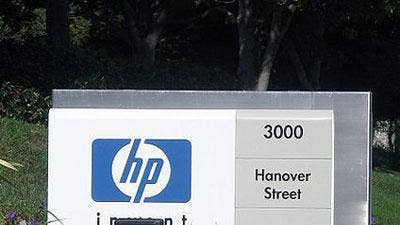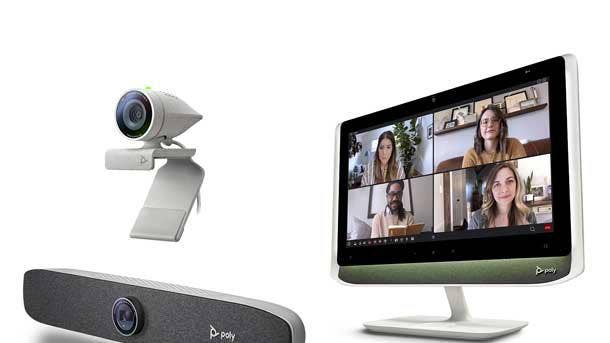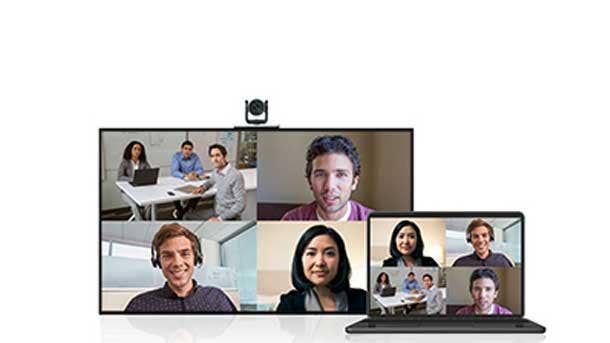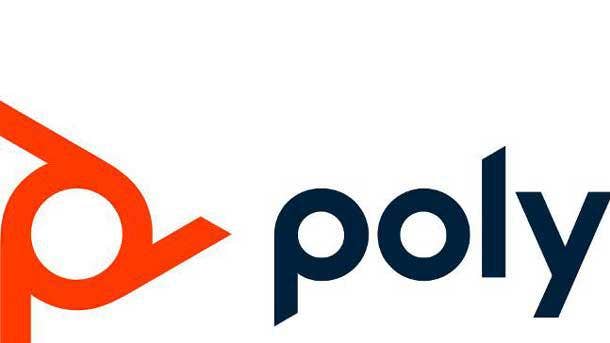HP CEO Enrique Lores On Poly Possibilities, Supply Chain And A ‘Once In A Generation Opportunity’
HP CEO Enrique Lores says his company’s $3.3 billion acquisition of Poly creates a ‘once in a generation opportunity’ to redefine the hybrid work landscape.

HP-Poly Deal Creates A ‘More Growth Oriented Portfolio’
HP CEO Enrique Lores told analysts that his company’s $3.3 billion acquisition of Poly creates a “more growth-oriented portfolio” that will drive “significant” returns for shareholders.
“This is a compelling combination to accelerate HP’s strategy to create a more growth-oriented portfolio and further strengthen our industry opportunity in hybrid work solutions,” said Lores during the call. “Importantly this transaction positions HP for long term profitable growth and value creation.”
HP Is paying $40 per share for Poly, a 50 percent premium on the close of the shares last Friday. The $3.3 billion price tag includes Poly debt
Lores said the pandemic has transformed the role technology plays in people’s lives with a “once in a generation opportunity” to redefine the way the work is done in a hybrid workplace.
HP said it expects the acquisition to be “immediately accretive” to revenue growth, margins and non GAAP EPS once the deal is closed.
In fact, HP said it expects to “realize substantial revenue synergies” in peripherals as well as meeting room and workforce solutions as a result of the acquisition.
HP, in fact, expects to achieve $500 million of revenue synergies by fiscal year 2025. Furthermore, HP said it expects to accelerate Poly’s revenue growth to an approximately 15 percent compound annual growth rate over the first three years after the closing of the acquisition.
A key part of that plan to drive Poly growth involves leveraging HP’s global commercial and consumer sales channels to drive expanded hybrid work solutions with Poly products. HP also expects to drive incremental sales from combining Poly’s products with HP’s PC portfolio
HP expects to improve Poly’s operating margins by approximately six percentage points from current levels by fiscal year 2025 “driven by scale efficiencies across supply chain, manufacturing and overhead.”
HP shares were down $1.78 or four percent after the PC and printer maker acquired Poly in a $3.3 billion cash deal.
HP paid $40 cash for each share of Poly, a whopping 50 percent premium from the Friday close of Poly shares. Poly shares stood at $49.77 in mid-day trading.
Responding to the drop in HP shares, Lores told CNBC that HP was buying Poly for the long term value.
“We are buying this company for the long term and for the long term value that we think we are going to be creating,” he said. “We strongly believe in the opportunity that we see in the hybrid space. We think this is a winning combination because of the portfolio, the technologies that they have and the complimentary go to market. We think we can really scale and the financial case is very strong. Long term this is a great acquisition for HP and we are very confident about that.”
CRN has reached out to HP for an interview with Lores with additional questions on the blockbuster deal.
Here are comments Lores made gathered from an early morning analyst call, a press conference and an interview with CNBC.

On The ‘Once In A Generation Opportunity’ To Redefine Hybrid Work
The pandemic has transformed the role technology plays in people’s lives. We believe the rise of the hybrid office is creating a once in a generation opportunity to redefine the way work gets done.
This is a long term, secular trend that is driving strong and sustained demand for solutions that enable seamless collaboration across home and office environments.
Today’s announcement demonstrates how we are capitalizing on attractive growth opportunities through strategic M&A. It also supports a plan we outlined at our last Analyst Day to expand into adjacencies and accelerate new solutions that strengthen our value proposition. The acquisition of Poly directly advances our strategy across the board.
We see hybrid work as a tremendous opportunity and we feel it is going to help us accelerate our leadership in this space.
The combination of assets that Poly brings is going to help us to accelerate our growth in two of our key growth areas.
From a financial perspective this is a very attractive opportunity with very significant returns to our shareholders.

Accelerating Peripheral And Workforce Solutions Growth
Poly will help accelerate our growth and scale in peripherals and workforce solutions- two of our five key growth areas.
The peripherals segment is expected to reach $110 billion by 2024 and it is growing at nine percent CAGR (compound annual growth rate).
Poly’s leadership in videoconferencing, cameras, headsets and software will significantly broaden our peripherals portfolio and position us well in the rapidly growing meeting room solutions industry.
We see equally attractive opportunity in workforce solutions. The workforce solutions TAM (total addressable market) is expected to reach $120 billion by 2024 and it is growing at an eight percent CAGR.
This growth is being driven by companies investing in digital services that enable IT to seamlessly set up, manage and secure a more distributed IT ecosystem.
Poly’s devices and software combined with HP’s strength across compute, device management and security creates a leading end to end portfolio of hybrid solutions.
Together we will provide customers with a unified platform that simplifies IT administration and provides a comprehensive solution for today’s hybrid workforce.

On HP’s Channel Plans Following The Deal
We don’t think this will change our overall channel approach. We will be integrating their products into our programs and allow our resellers to expand their business. This gives us the opportunity to scale up to leverage our strength, and to also leverage the presence that they have in channels, that until now, we’ve had a very limited presence.
It is very important to highlight that the go to market engines from both companies are very complimentary. As you know HP has go to market models for retail, commercial channels and enterprise.
Poly brings great specialists for audio/video solutions. They also have a strong presence in the audio/video channel where HP is not. So this gives us a lot of momentum as we combine the portfolios, as we combine the go to markets.
We expect the majority of the growth to come from the commercial side. This is one of the reasons why we thought Poly was a great asset.
It will come both from selling through our current channels- their solutions- but also through leveraging their audio video speciality channels and go to market.
All of the investments are built into our plans and this is really what will really be driving the growth we are predicting to have.

How HP Can Help With Poly Chain Supply Constraints
The major impact that their business has had has been because of no availability of components and the impact that this has had on their sales in the short term. This has driven a very elevated backlog.
As we address that and as we bring the capacity and the scale of our supply chain to address the backlog, that will help accelerate their growth especially in the short term.
By combining Poly’s leadership in the IT channel along with our complimentary sales and customer services’ teams we expect to drive increased penetration and refresh.
By utilizing our channel and scale we expect to accelerate Poly’s revenue growth and improve their operating margins.
Our scale matters and we think we can have a significant positive impact on Poly.
Their growth has been constrained by supply chain. This is another area where the scale of our supply chain will help to accelerate their growth.
So really growth driven by innovation, complimentary go to market and the impact that our supply chain is going to have in enabling them to build more product.
It is important to realize that in situations like the one we are facing scale matters. Scale to support and drive our business will help us to make a difference from a component availability perspective (for Poly).

On The Post Pandemic Hybrid Work Meeting Room Opportunity
What is really important to realize is the hybrid work model is a growing market- a growing market both to enable people to work from home, but also as (HP Personal Systems President) Alex (Cho) explained to equip offices for the new hybrid model.
Only 10 percent of the offices have been equipped with videoconferencing solutions. We expect that more and more (videoconferencing rooms will be outfitted) as companies start reopening and allow people to work from home as HP will be doing. This will be a significant tailwind because both markets will drive growth for the companies.
If you think about videoconference rooms they are not designed for a hybrid way of working where some people are in the (meeting) room and some people are working from home. So most companies including HP are redesigning our setups to make sure that we provide inclusive systems for people that will be connecting from home. This will be driving the refresh.
As employees continue to set up home office environments they will also invest in validating and improving their connections. And what we have shared in the past is that peripherals have a refresh rate that is faster than PCs. So part of the opportunity is driven by that.

On Poly’s Integration Issues Following Plantronics-Polycom Merger
They were impacted by the marriage between Plantronics and Polycom (the 2018 merger with Plantronics acquiring Polycom in a cash and stock transaction valued at $2.0 billion). This create some short term impacts on the revenue.
And then as they were starting to grow they were impacted by supply chain challenges. The combination of both has driven the impact you have seen (with Poly recently projected $1.7 billion in revenue for fiscal 2022, down from $1.74 billion in fiscal 2021).
So the combination of both has driven the impact you have seen. But I think what is important for us going forward is first as we have shared this is a growing market. We really see the value in the combination both in the portfolio and the leverage that we can drive from a go to market perspective and how we have a scale that will help on the supply chain constraints. This is why we see going forward a 15 percent CAGR (Compound Annual Growth Rate) that we really think will help us to continue to grow in these categories.